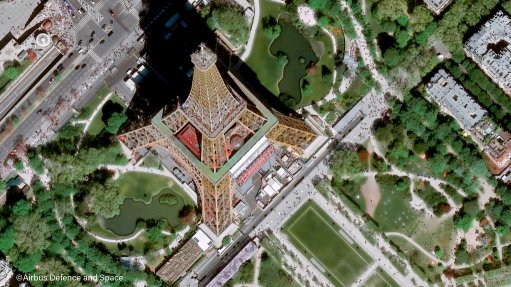
Images of the Eiffel Tower taken by Airbus Defence and Space's Pléiades Neo satellites
Photo by: Airbus Defence and Space
Airbus Defence and Space, part of the Europe-based global major aerospace group Airbus, has announced that it is to augment its in-house Earth observation (EO) satellite constellation capability through the development and deployment of the next generation of its Pléiades Neo satellites. Prosaically designated Pléiades Neo Next, the first of the new satellites will be launched in the “next few years”, in Airbus’ words.
“The Pléiades Neo Next programme builds on the success of our existing Pléiades Neo constellation which serves government and commercial customers around the world,” affirmed Airbus Defence and Space executive VP connected intelligence Karen Florschütz. “This new programme will further enhance our standard of excellence in terms of quality, performance, and reliability to deliver images as well as geo-intelligence services and applications.”
This new satellite programme is funded, and will be manufactured and operated, by Airbus itself. The new satellites will work with the group’s existing Pléiades Neo constellation, thereby providing customers with higher location revisits, as many as several times a day, for anywhere on Earth.
The Pléiades Neo Next satellites will provide even greater image resolution. Customers will still be able to task a satellite as close as a few dozen minutes before it overflies the location of interest. This next generation of the programme will also deliver an improved ground segment, including customer Direct Receiving Stations (DRS) and the OneAtlas digital platform (OneAtlas).
The new satellites will be able to provide full image capacity to a wide range of sectors and users. These include agriculture, civil engineering, defence and intelligence, disaster response, environment, location-based services, mapping, maritime, urban planning and utilities. Customers will be able to rapidly receive images through their own DRS, or via OneAtlas, allowing the spacecraft to be used in mission-critical applications.
Airbus’ current EO satellite fleet includes both optical and radar satellite constellations. This allows the group to provide complementary services and applications. And to do so over a range encompassing all weather and light (day and night) conditions, as well as various resolutions. In addition, the group is developing a parallel set of new capabilities, based on platforms operating in the stratosphere.